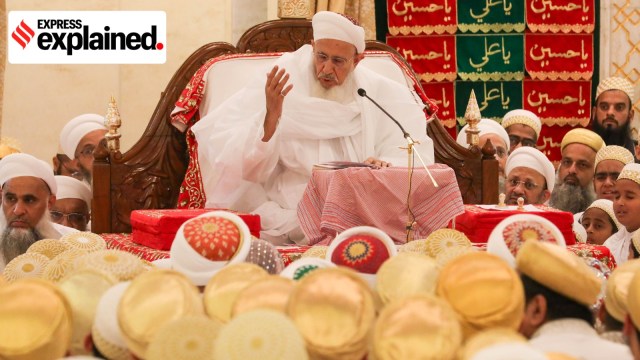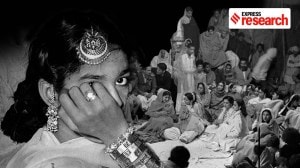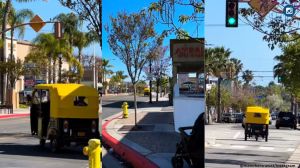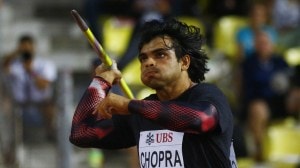- India
- International
Dawoodi Bohra leader wins legal battle: Who challenged Syedna Mufaddal Saifuddin’s position as 53rd Dai, and why?
Decade-long tussle for leadership of small, prosperous community ends; what is the concept of 'nass' at the heart of the dispute?
 In 2014, the 52nd al-Dai al-Mutlaq, Syedna Mohammad Burhanuddin, passed away, and his son, Mufaddal Saifuddin (seen in the photo), succeeded him as Syedna. (Photo: Arul Horizon
In 2014, the 52nd al-Dai al-Mutlaq, Syedna Mohammad Burhanuddin, passed away, and his son, Mufaddal Saifuddin (seen in the photo), succeeded him as Syedna. (Photo: Arul HorizonIn a relief to the spiritual head of the Dawoodi Bohra community, Syedna Mufaddal Saifuddin, the Bombay High Court on Tuesday (April 23) dismissed a challenge to his leadership that had been ongoing for a decade.
Justice Gautam S Patel had concluded the hearing and reserved his verdict in the dispute on April 5, 2023.
Pronouncing the verdict on Tuesday, Justice Patel said he had kept the verdict “as neutral as possible for personalities involved” as “feelings will run high”, and that he had decided the issue “on proof and not faith”.
What was the dispute within the community?
The Dawoodi Bohras are a religious denomination among Shia Muslims, who have traditionally been a community of traders and entrepreneurs. The Dawoodi Bohras have more than 5 lakh members in India and more than 10 lakh members across the world.
The supreme religious leader of the community is known as the al-Dai al-Mutlaq, who has his seat in Mumbai.

In 2014, the 52nd al-Dai al-Mutlaq, Syedna Mohammad Burhanuddin, passed away, and his son, Mufaddal Saifuddin, succeeded him as Syedna. This was challenged by the late Syedna’s (Burhanuddin’s) half-brother, Khuzaima Qutbuddin, in the Bombay HC.
Justice Patel had been hearing the suit for its final disposal since November 2022.
How is the successor of the Dawoodi Bohra leader picked?
As per faith and the Dawoodi Bohra doctrine, a successor to the Dai is appointed through “divine inspiration”. The “nass”, or conferment of succession, can be conferred upon any deserving member of the community. In practice though, the nass is often conferred upon a member of the family of the current Dai.
So what was Khuzaima Qutbuddin’s claim?
In the suit filed in April 2014, Qutbuddin asked the High Court to restrain the late Syedna’s son from acting as the Dai, and sought entry to Saifi Manzil, the house of the Syedna in Mumbai.
Qutbuddin alleged that Syedna Mufaddal Saifuddin had taken over the leadership of the Dawoodi Bohras in a “fraudulent manner”.
Qutbuddin claimed that after Burhanuddin became the Dai (taking over from his father Syedna Taher Saifuddin) in 1965, he publicly appointed his half-brother (Qutbuddin) as the maazoon (second-in-command), on December 10, 1965. But prior to the mazoon announcement, Burhanuddin had privately anointed him his successor through a secret nass, Qutbuddin claimed.
According to Qutbuddin, during the public appointment, persons of “higher spiritual learning present” understood that along with the title of maazoon, he was also given the title of mansoos (successor), though the latter was not conveyed in so many words.
Burhanuddin asked him to keep the private nass a secret, Qutbuddin claimed. He maintained that he had abided by the oath of secrecy by which the 52nd Dai had bound him, until his death.
Senior advocate Anand Desai argued in court that as the Dai is “infallible”, and as the Dai appoints a successor based on “divine inspiration of the Imam in seclusion”, the nass or appointment of successor — which had already been conferred upon Qutbuddin — could not have been changed and revoked.
Qutbuddin died in the United States in 2016, and his son, Taher Fakhruddin, became the plaintiff in the case. Fakhruddin claimed that his father had conferred the nass upon him, and thus he should be declared the Dai.
And what was Syedna Mufaddal Saifuddin’s claim?
The defendant, Syedna Mufaddal Saifuddin, made submissions through senior advocates Iqbal Chagla, Janak Dwarkadas, and Fredun Devitre.
Counsel for the Syedna argued that the nass of 1965 lacked witnesses, and thus could not be accepted. They also argued that as per established and prevalent doctrines of the Dawoodi Bohra faith, nass could be changed and revoked.
The senior advocates told the Bench that on June 4, 2011, the 52nd Dai (Burhanuddin) had conferred nass on Syedna Saifuddin in the presence of witnesses at the Bupa Cromwell hospital in London, where the Dai had been admitted after suffering a stroke.
Thirteen witnesses deposed on behalf of the defendant, which included the doctors who treated the 52nd Dai, the son and grandson of the deceased Dai, and others with expertise in the Dawoodi Bohra doctrine, along with the rector of the community library.
The witnesses presented documents to show that in 1969, the 52nd Dai had made his intention of appointing his son (the defendant) as his successor, and had informed close and senior members of the community of his decision. The conferment was reiterated in 2005 in secret, and was reaffirmed publicly in June 2011, it was argued.
Counsel for defendant questioned the silence of Qutbuddin about his claim to the post of Dai between 2011 and 2014, and alleged that he had only made the claim after the Dai’s (Burhanuddin’s) demise (in 2014) as an “afterthought”.
The defendant also contended that even if nass had been conferred on the original plaintiff (Qutbuddin) in 1965, as per the doctrinal belief of the community, only the last nass would be valid.
Why did the case go on for so long?
There were various reasons, including deliberations on the voluminous evidence put on record by the contesting parties. The death of the original plaintiff (Qutbuddin) resulted in the hearing being stalled for some time, and regular hearings were disrupted during two years of the Covid-19 pandemic.
More Explained
EXPRESS OPINION
May 08: Latest News
- 01
- 02
- 03
- 04
- 05































